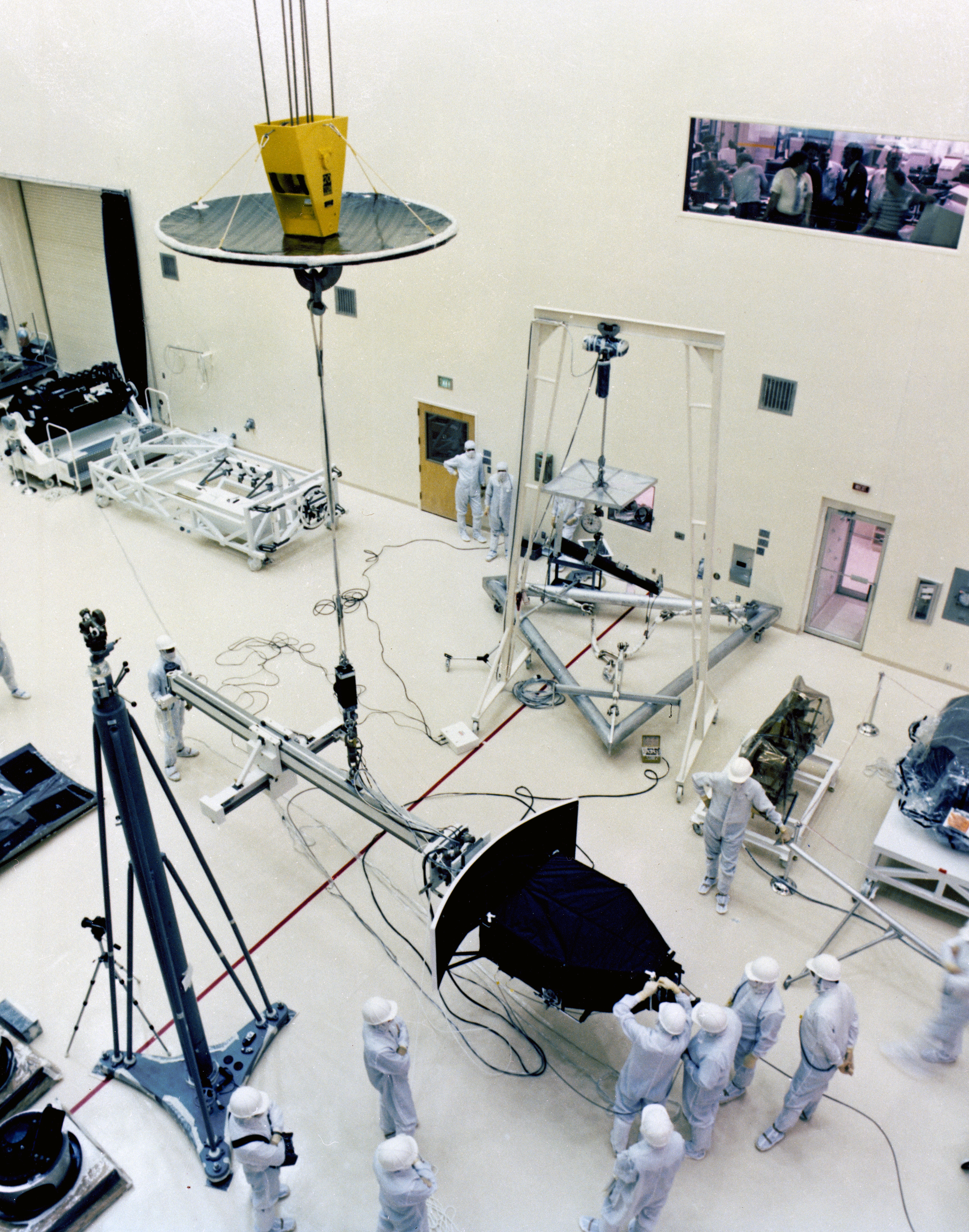
Hubble Space Telescope, Wide Field and Planetary Camera
In this photograph, engineers and technicians prepare the Hubble Space Telescope's Wide Field and Planetary Camera (WF/PC) for installation at the Lockheed Missile and Space Company. The WF/PC was designed to investigate the age of the universe and to search for new planetary systems around young stars. It was designed to take pictures of large numbers of galaxies and close-ups of planets in our solar system. Hubble was the first of NASA's great observatories and the most complex and sensitive optical telescope ever made. The purpose of Hubble is to study the cosmos from a low Earth orbit by placing the telescope in space, enabling astronomers to collect data that is free of Earth's atmosphere. Hubble was deployed from the Space Shuttle Discovery (STS-31 mission) into Earth orbit in April 1990. The Marshall Space Flight Center had overall responsibility for design, development, and construction of the observatory. The Perkin-Elmer Corporation in Danbury, Connecticut, developed the optical system and guidance sensors. The Lockheed Missile and Space Company, Sunnyvale, California, produced the protective outer shroud and spacecraft systems, and assembled and tested the finished telescope. Date Created: 1985-01-01
